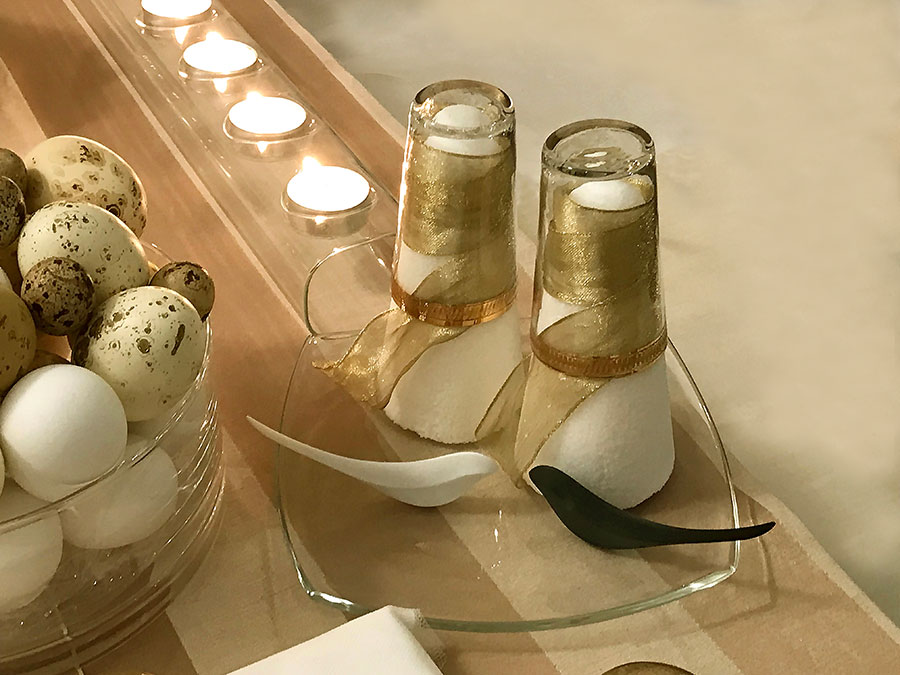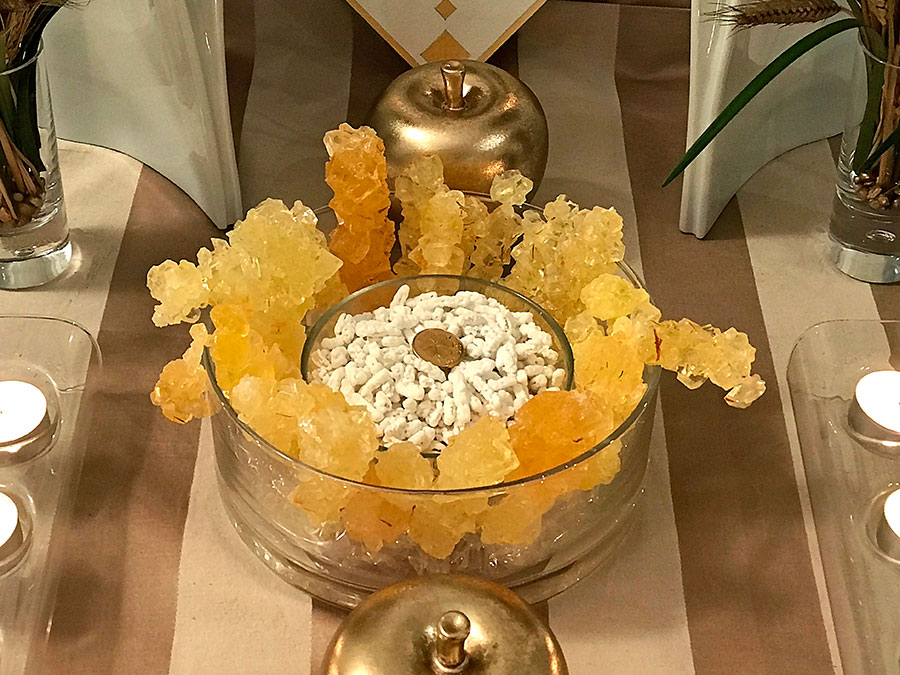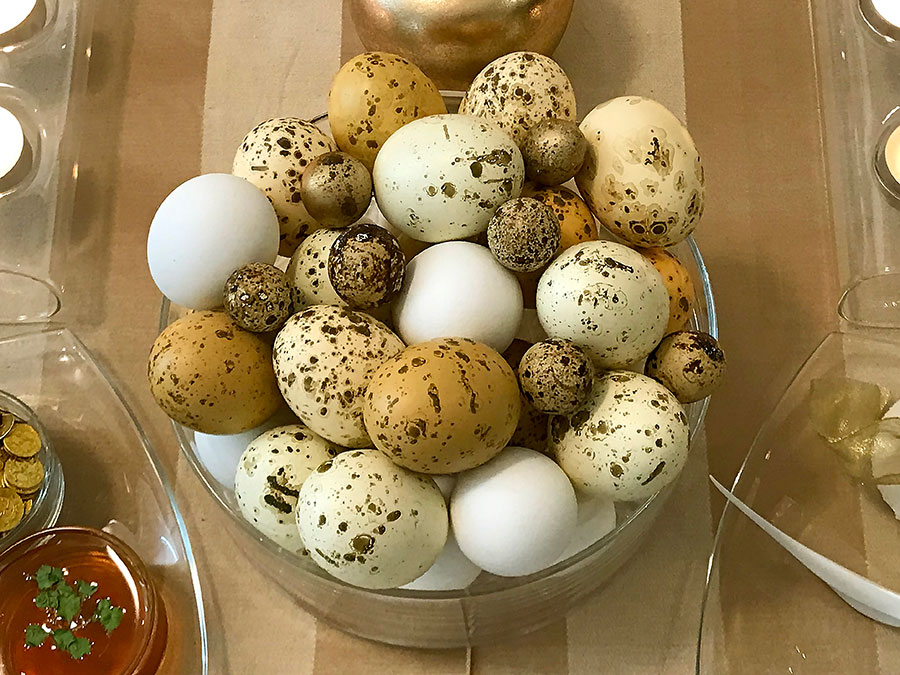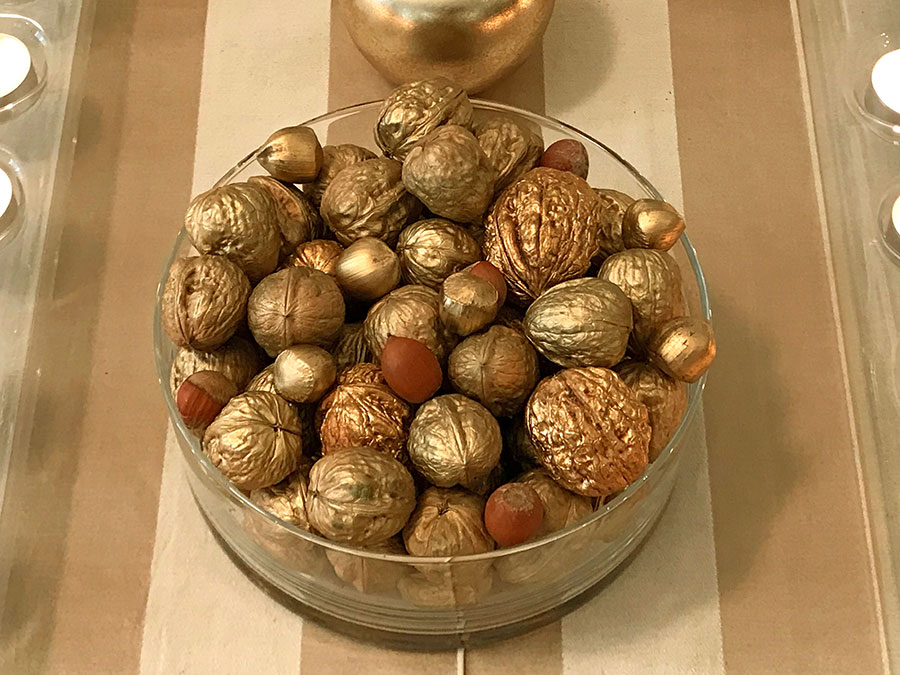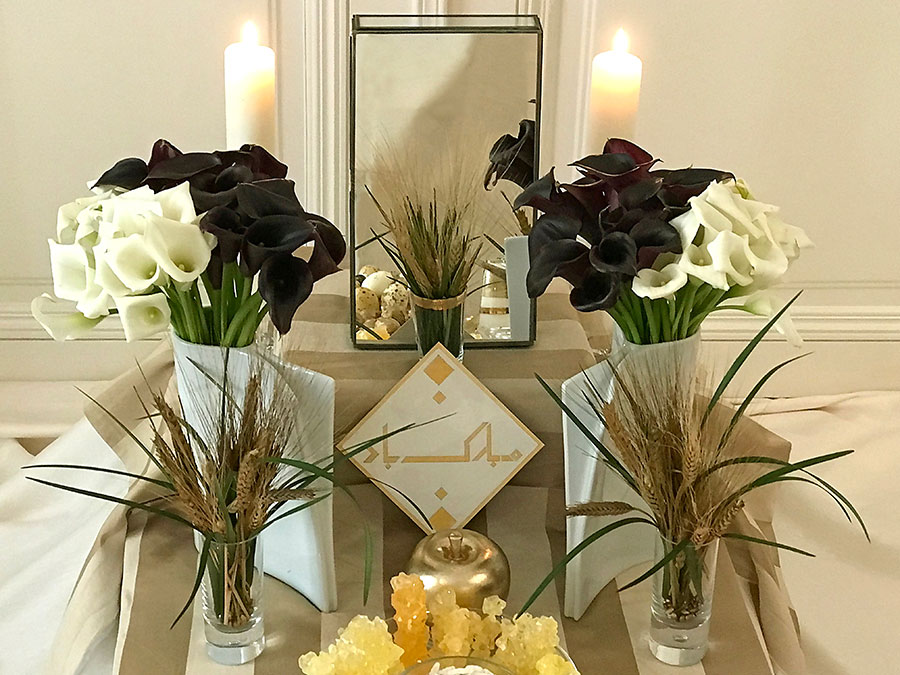Aqd @ Wedding Season: Private Exhibition
This orderly, manifestly symmetrical contemporary marriage sofreh (sofreh-ye aqd), that showcases a fusion of tradition and modernity, is inspired by the “Gold and Glass” sofreh featured in SOFREH: The Art of Persian Celebration, and posted on its social media pages in July 2017 and August 2018. It was designed for a private exhibition in June/July 2022.
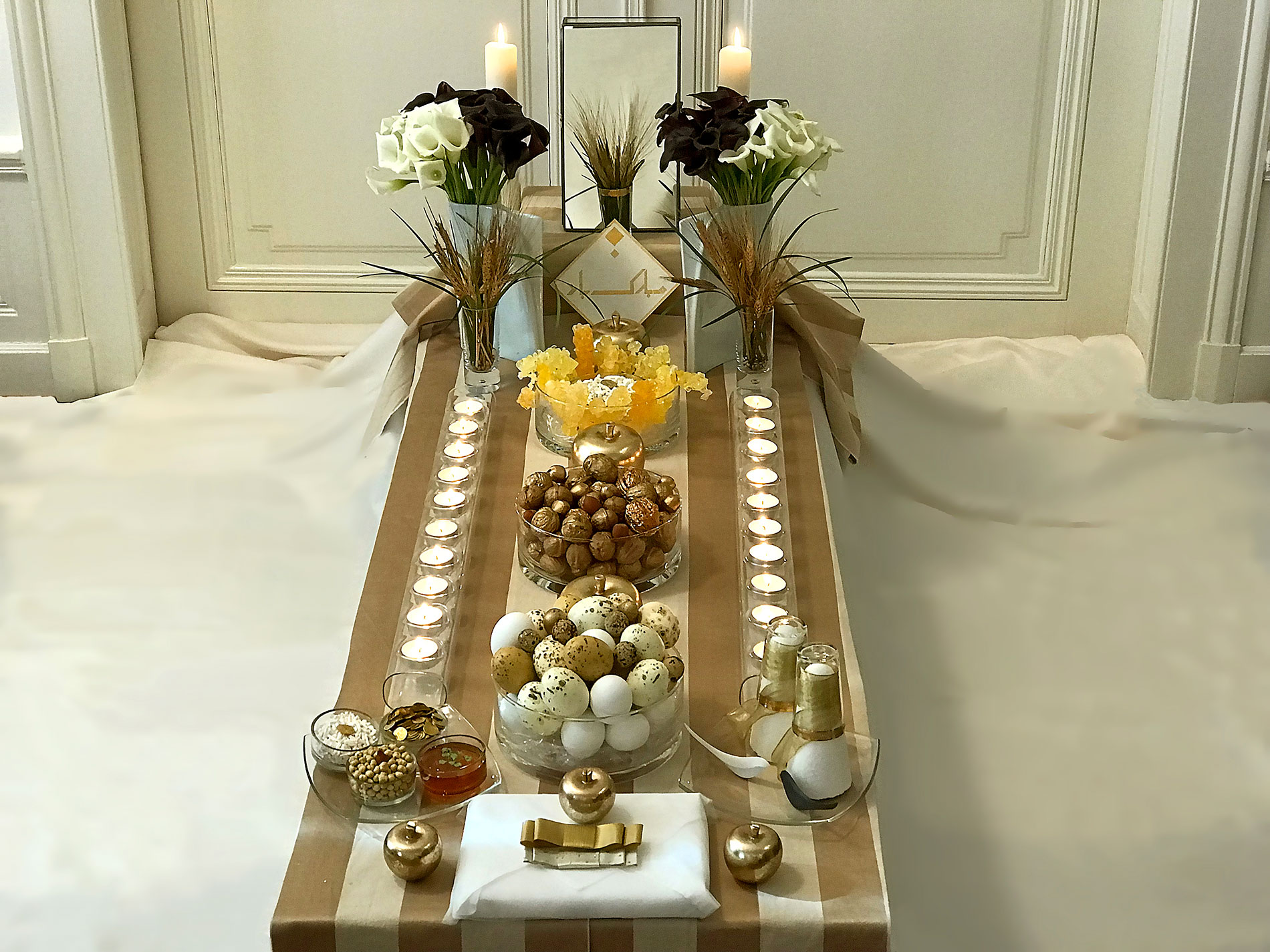
This is the overall view of the sofreh, which includes an understated mirror flanked by pillar candles and modern vases of black and white calla lilies. Two rows of tea lights illuminate the sofreh. The important symbolic elements of the sofreh-ye aqd are presented in simple glass containers. A stylized Persian script of congratulations (mobarak bad) and a neatly wrapped volume of the Qur’an adorn the two extremities of the sofreh.
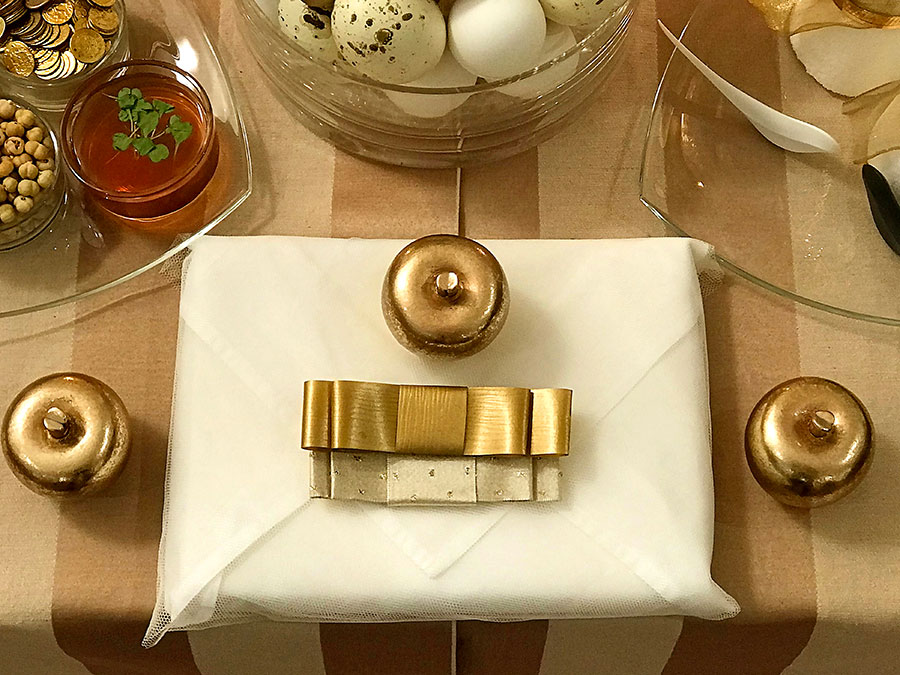
This lower section of the sofreh showcases a Qur’an, elegantly wrapped in a fine ivory textile and tulle and fastened with two simple flat bows in gold and cream. Three miniature gold-finish sculptured apples embellish this section. The Qur’an, which is usually part of the Persian marriage sofreh, signifies protection and guidance for the newlyweds. The apple, which is considered a heavenly fruit (miveh-ye beheshti), is a symbol of fertility.
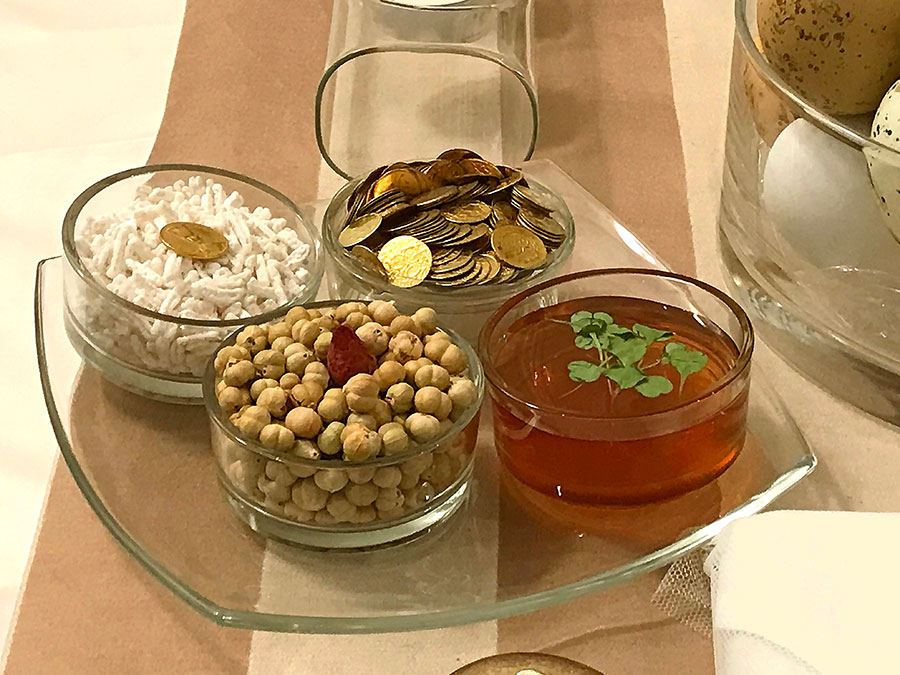
This image focuses on the miniature ensemble of four important elements of the sofreh-ye aqd, presented in tiny glass containers, placed on a concave square plate. Persian sugared almonds (noql) are a symbol of sweetness and harmony and gilded coins (sekkeh) symbolize wealth and prosperity. As their fragrant smoke is believed to have evil-averting powers, seeds of rue (esfand), here presented in their pods, are burnt during the ceremony. The newlyweds also exchange a taste of honey, in the hope of a sweet married life.
